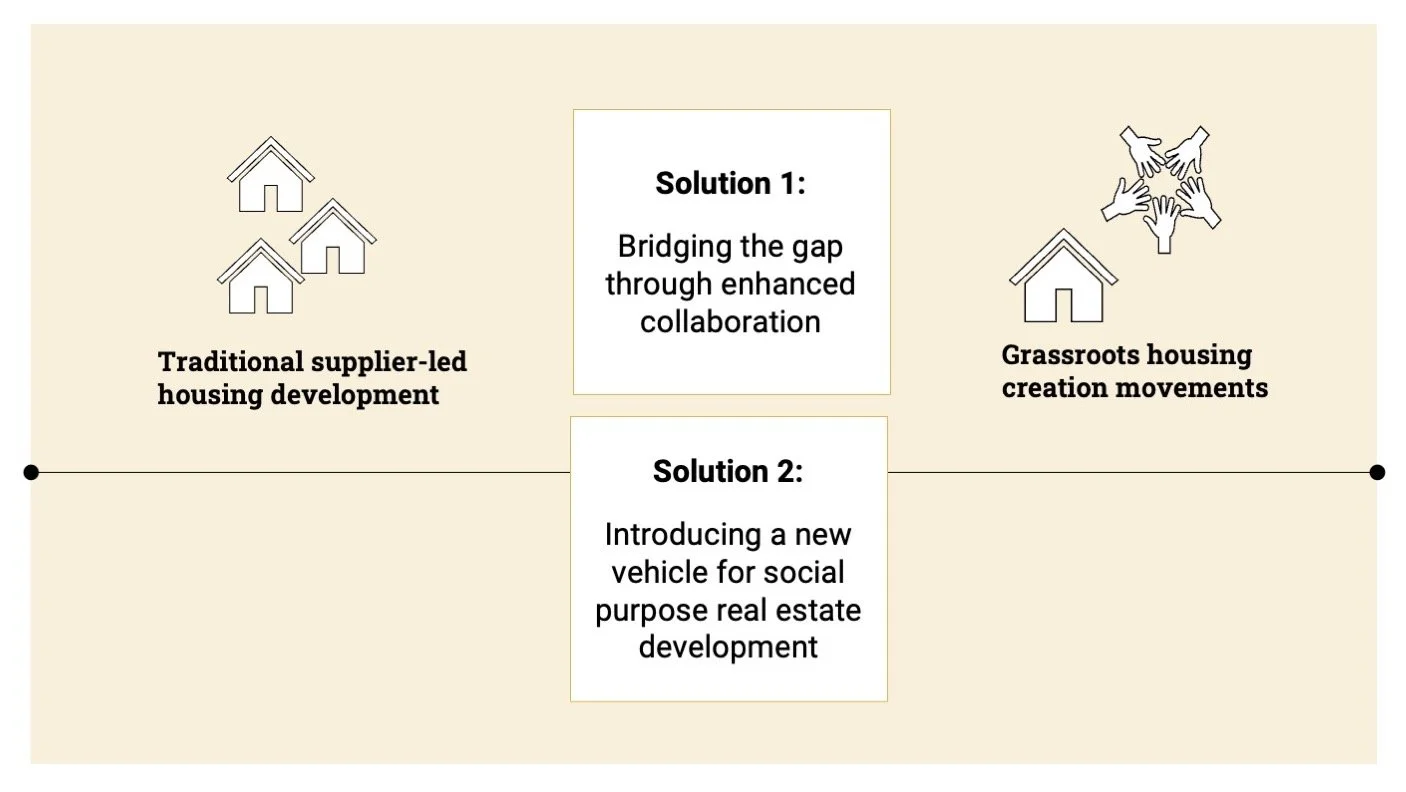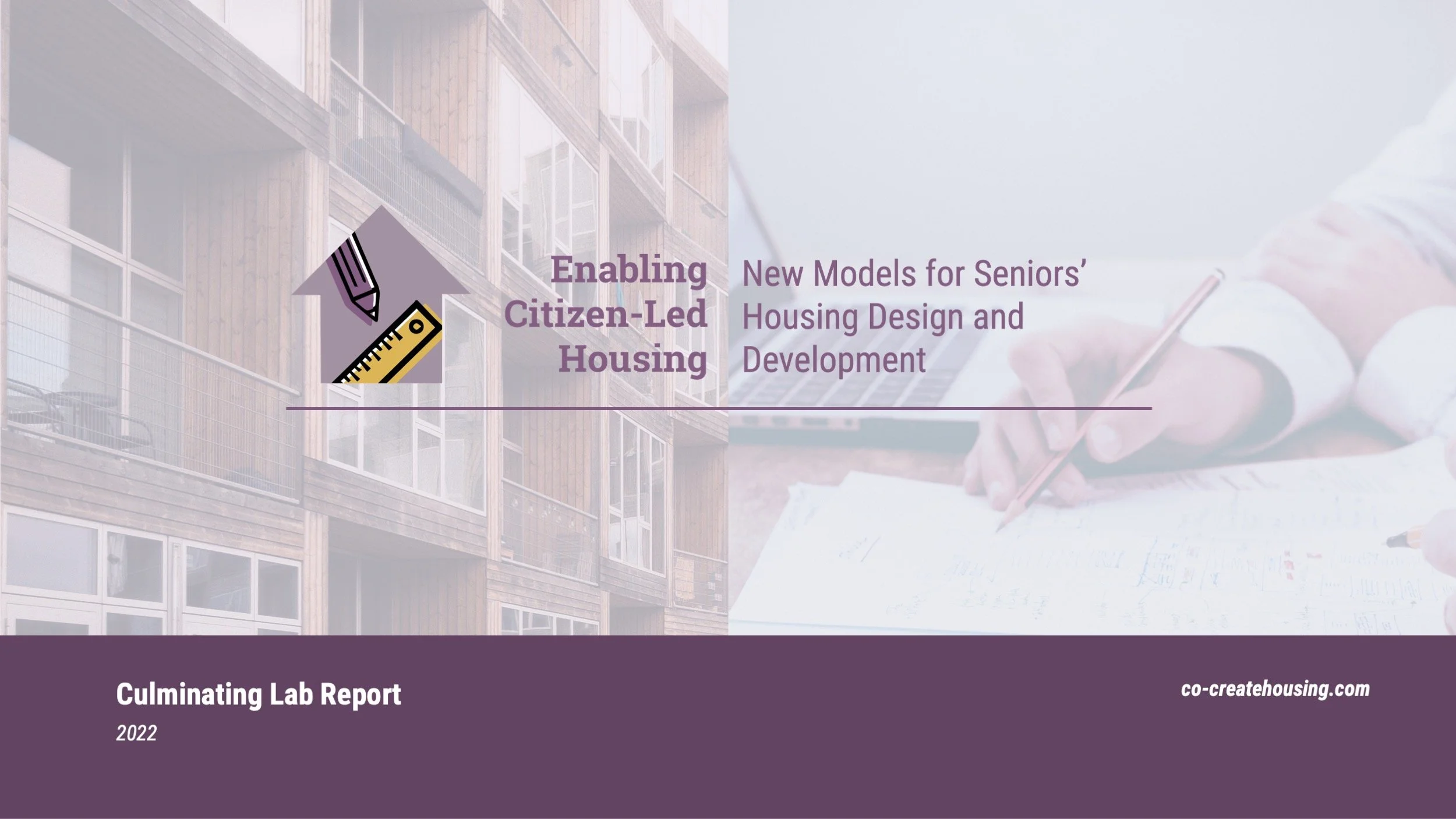
Solutions
Approach
In our solution development process, we considered interventions that could either improve what exists in today’s system or introduce new elements, models, or ways of working.
Over several design workshops, we worked with a diverse group of Lab participants that included seniors, non-profit developers, and private developers to imagine and build out two distinct solution concepts. With these interventions, we hope to support a shift towards more citizen-led housing and push forward the conversation by presenting two concrete visions of what it could look like in practice.
Solution 1
A Certification Program for Age-Friendly Housing Development
The Solution Brief
How might we enable residents to work effectively with developers to create more age-friendly housing for the community? What could this new process look like?
What mechanisms could incentivize developers to adopt these practices?
What is the Solution?
This is a new certification program to incentivize the creation of more age-friendly housing where seniors are involved in the housing development process by providing a mechanism for funders and government landowners to request the use of age-friendly building practices, while providing developers with a social purpose branding opportunity.
The Age-Friendly Community-Building Certification envisions a future where seniors and people of all ages are more frequently involved in housing development processes in their communities, enabling a more balanced supply of age-friendly housing across the country.
How Would it Work?
The Age-Friendly Community-Building Certification requires three components:
The creation of a certification program that provides guiding principles and requirements for the process of co-creating age-friendly housing
A certification body that administers the certification to developments that demonstrate compliance (this could be a body that exists within an existing seniors-serving organization)
Government landowners (e.g. municipalities) and social-purpose real estate funders requiring the certification to unlock land, funding, or other benefits
Anticipated Impact
This solution helps shift the dynamic in the current developer-led process of supplying housing to provide avenues for citizens to get involved creating housing that meets their needs and desires. It also has the potential to:
Enable governments to achieve age-friendly housing objectives through an actionable program.
Help investors and funders prioritize and focus funds on development projects that meaningfully involve citizens with the aim of creating age-friendly housing for the community.
Help developers keep up with shifting public needs and desires through directly working with their target audiences.
Become a widely recognized certification brand (similar to LEED) that helps developers market their housing while helping seniors identify buildings they may want to move into6.
Promote shared stewardship over housing as community assets through development processes that foster a sense of communal ownership over the project.
.
Solution 2
A New Social Purpose Real Estate (SPRE) Organization
The Solution Brief
How might we create an entirely new development vehicle with a social mission to support community-centred real estate initiatives?
What is the Solution?
This is a new social purpose real estate development organization that creates more age-friendly housing options by: supporting grassroots seniors’ groups to create their own housing, developing age-friendly housing, and offering a community investment opportunity to neighbours looking to support the creation of age-friendly housing.
How Would it Work?
The social purpose real estate development organization would require:
Expertise in real estate development and operations
Channels to promote offerings and opportunities
Key partnerships with municipalities, impact-oriented developers and landowners, community members, and other stakeholders with assets (e.g., land, financing) to contribute and invest.
Anticipated Impact
This solution supports a shift to more community involvement in real estate development, while addressing existing barriers, particularly the complexity and risk associated with the business of development.
Final Report
See our report for more information about our Lab process and the two solutions.




